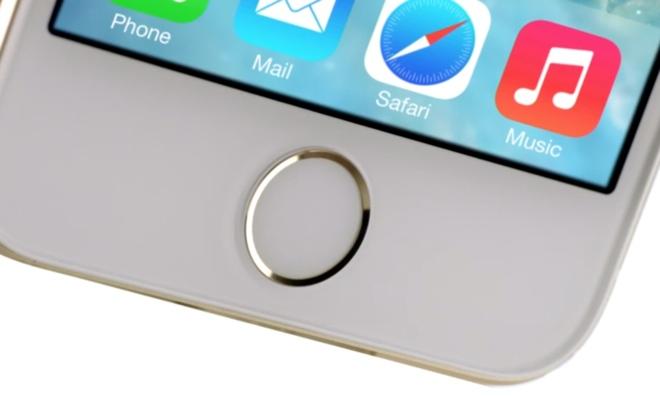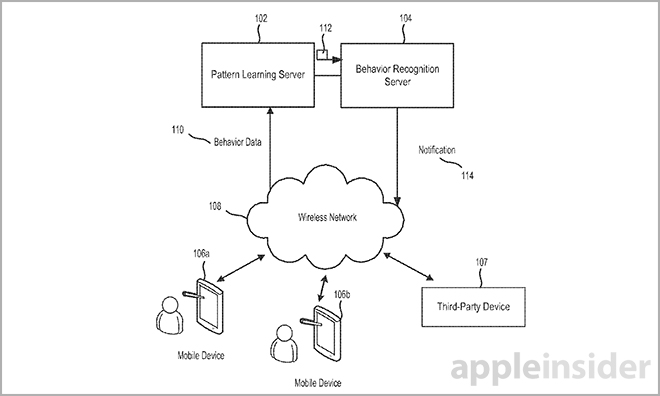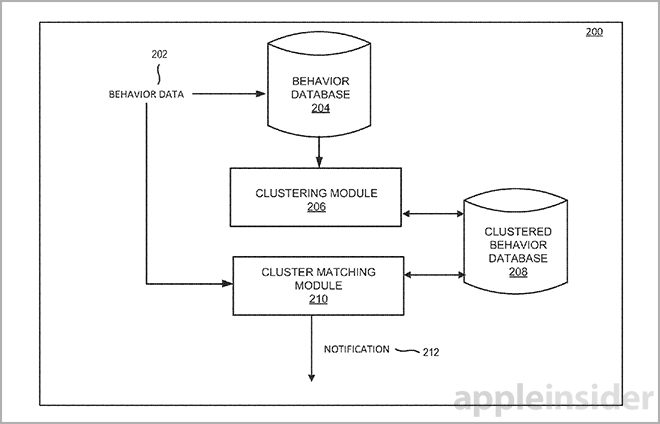An Apple invention published by the U.S. Patent and Trademark office on Thursday describes a method by which an iPhone can set off an alert or automatically lock the device based on detected changes in user behavior.
According to Apple's patent application for "Generating notifications based on user behavior," an iPhone or other mobile product employs behavior recognition techniques to determine whether the current user is the device owner. When usage patterns don't match those of the owner, an alert, notification or system action is triggered.
The system relies on pattern recognition and learning to parse out unusual behavior. Any form of input or interaction with the device can be put compiled for behavior data acquisition, including system data like location, motion sensor data, and input gesture patterns. Other data like grammar, vocabulary and even keyboard orientation preferences may be stored for later recall and analysis.
Apple's invention constantly monitors user behavior, comparing it to historical data known to be associated with a device owner. For example, an iPhone's accelerometer generates data about a user's gait, then compares that information with data stored either onboard or on a remote server. Analysis may also take place offsite on a pattern learning server.
As can be expected from a sensor-laden device in constant contact with a user — much of the time spent in use — a lot of information is generated. Everything from common misspellings of words to routine device interactions to frequently used phrases, a device harvests a wide plurality of personal information.
Due to the privacy concerns, the behavior learning server can be programmed by the user to ignore certain types of behavior like location preferences. In these cases, generalizations and relative positioning replace granular data, protecting individuals from intrusive analysis.
To help ease computational stress, the pattern learning server is able to group behavior classifications and data into clusters instead of analyzing and comparing each action separately. These clusters of behaviors are compared against one another and data must fall within predefined thresholds to continue normal operation.
If a threshold is breached, meaning unusual behavior has been detected, the recognition server may transmit a signal to remotely lock the device until a user verifies themselves via password or some other form of trusted identity like Touch ID credentials.
Alternatively, the server can send out a notification to a third-party device, or another mobile phone owned by a different party. An example offered in the application is that of a care worker receiving a notification when an elderly device owner falls or exhibits behavior indicative of incapacitation.
It is unclear if Apple will deploy a behavior learning feature in a future version of iOS, though the latest iOS 8 beta builds do not currently support such functionality. Due to growing concerns over data privacy, even if the technology were to one day roll out, the breadth of measured behaviors would likely be narrowed and users would almost certainly have to manually opt-in to the feature.
Apple's behavior learning patent application was first filed for last January and credits Gregory T. Lydon and Sylvain Rene Yves as its inventors.
 Mikey Campbell
Mikey Campbell



-m.jpg)






 Marko Zivkovic
Marko Zivkovic
 Mike Wuerthele
Mike Wuerthele
 Christine McKee
Christine McKee
 Amber Neely
Amber Neely
 Wesley Hilliard
Wesley Hilliard

 William Gallagher
William Gallagher










15 Comments
" For example, an iPhone's accelerometer generates data about a user's gait, then compares that information with data stored either onboard or on a remote server. " So if I break my leg, then not only do I have to deal with trying to ambulate with crutches under my arms. I suddenly also have to enter my password every few minutes. I wonder what Apple's implementation would actually be. They tend to get it right; if it's not right immediately (Apple Maps), then they silently adjust it until it works very well (Apple Maps). Brent
This will be an excellent way to guard against (or at least retroactively detect) mind control or possession. But the alerts should probably go to a loved one or the authorities instead of the compromised individual.
Think about this in the context of Wearables. Very useful data. Remember, Apple is all about removing the complexity from technology. They are essentially trying to automate authentication/ two-factor authentication.
Why bother with a patent.
Samsung will just copy it, tie it up in the courts while mysterious unknown parties move to invalidate it and make millions while waiting for a court based decision.
So what I hear when I read this is "Apple is going to expand on its tracking and storing your common locations, and now will track and store your location, your habits, how you walk, etc".
Just make sure to also give me a way to turn all that tracking junk off.